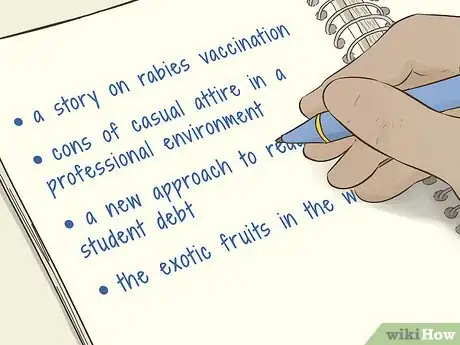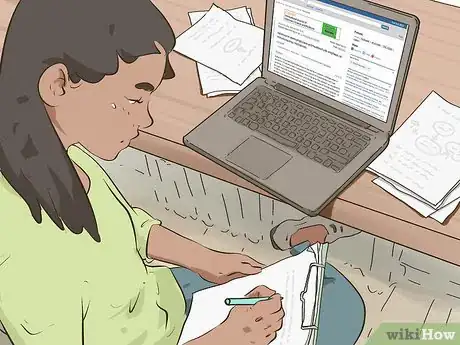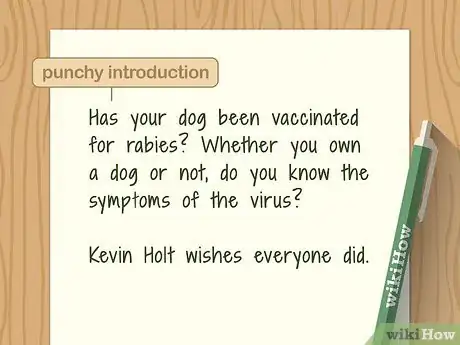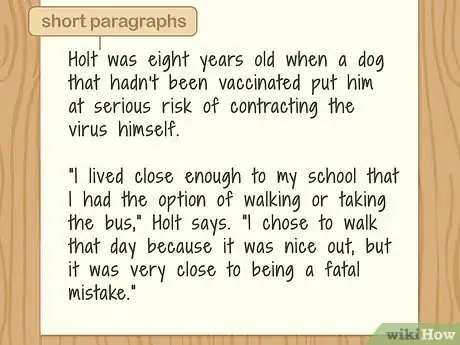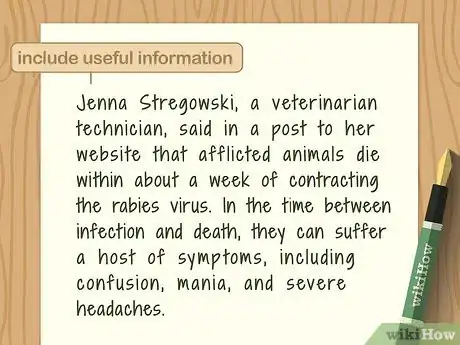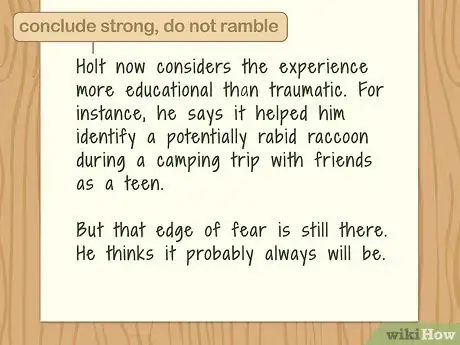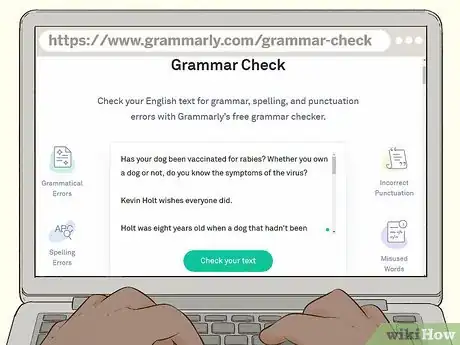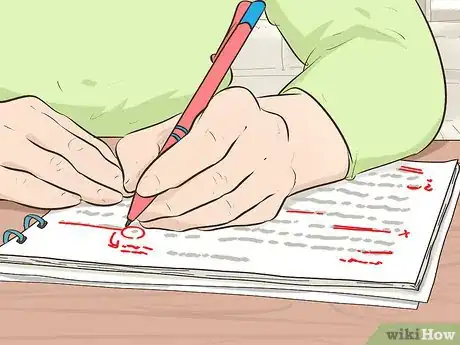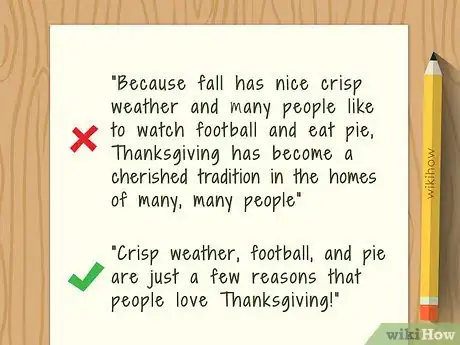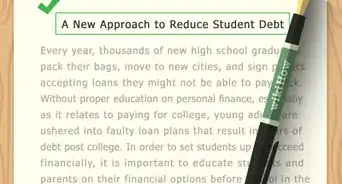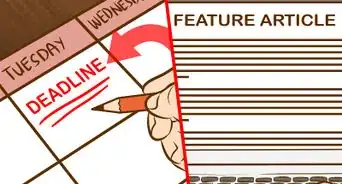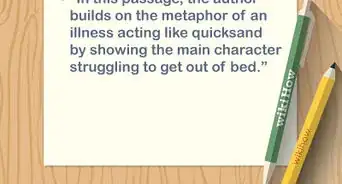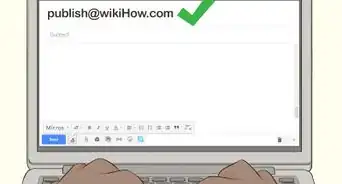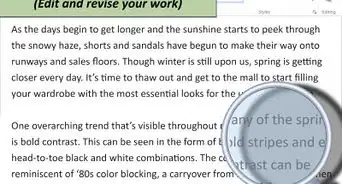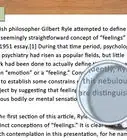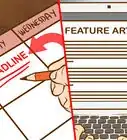This article was co-authored by Gerald Posner. Gerald Posner is an Author & Journalist based in Miami, Florida. With over 35 years of experience, he specializes in investigative journalism, nonfiction books, and editorials. He holds a law degree from UC College of the Law, San Francisco, and a BA in Political Science from the University of California-Berkeley. He’s the author of thirteen books, including several New York Times bestsellers, the winner of the Florida Book Award for General Nonfiction, and has been a finalist for the Pulitzer Prize in History. He was also shortlisted for the Best Business Book of 2020 by the Society for Advancing Business Editing and Writing.
There are 10 references cited in this article, which can be found at the bottom of the page.
wikiHow marks an article as reader-approved once it receives enough positive feedback. In this case, several readers have written to tell us that this article was helpful to them, earning it our reader-approved status.
This article has been viewed 332,824 times.
There’s so much content available these days that it might seem like your writing will never stand out. Think positively! Whatever type of article you’re writing, you can take some steps to make sure you create a great article that people will find interesting. Start by organizing all of your ideas and information. Then spend some time writing a catchy, thoughtful, and accurate article. Finally, give it a good edit so that it looks complete and professional.
Steps
Finding a Topic and Gathering Information
-
1Ask your boss or teacher for guidelines. If you’re writing an article for work or for school, make sure that you understand your task. Take a few minutes to check in with the person in charge to ask any questions that you have. Do this before you start writing so that you don’t have to redo any of your work.[1]
- Maybe your boss has asked you to write an article for the company newsletter. Check to see if there is a certain topic you should write about and how long the article should be.
- If you’re writing an article for the school paper, ask the editor or supervisor what you should cover. They might want you to write about the library renovations or write a feature about new students.
- Always stick to any guidelines that you’re given. It will make you look competent and responsible.
-
2Make a list of ideas if you’re working independently. If you’re a blogger or a freelance writer, you might be responsible for coming up with your own content. To find a good topic, think about your audience. For example, if you’re writing a cooking blog, you’ll want to stick to food-related topics.[2]
- Do some free-thinking. Just jot down any thoughts that come to mind. You can weed out the bad ideas later!
- For your cooking blog, you might scribble down words like “keto,” “blenders,” or “holiday meals.”
- Once you choose a topic, start making it more specific. For example, if you decide to write about holiday meals, you can narrow that down by choosing a specific holiday or season that you want to write about. You might decide to write about updated Thanksgiving classics.
Advertisement -
3Research the topic to make sure you’re informed. Spend some time looking up information online about whatever you’re writing about. You could also check your local library to see if there are good books on the subject. Depending on what type of article you’re writing, you might need to do some additional research.[3]
- If you’re writing about a person or doing a news article, it’s a good idea to interview some people.
- When you do an interview, prepare a list of questions ahead of time so that you don't forget any important questions. Be on time and be respectful. Take good notes or record the conversation so that you can accurately quote the person.
- For your article about Thanksgiving dishes, you might talk to some friends to see what they like to eat. You could also look up some food safety facts so that you can give sound advice about properly cooking a turkey.
-
4Choose reliable sources. To make your article sound authoritative, you should choose sources that are accurate, current, and unbiased. If you're looking at sources online, check to see if you can find an author's name and the date the page was last updated. If you can't find an author, it might be better to use a different source. An exception would be a wiki, which has multiple authors. If that's the case, just check to see if they used outside sources to back up the facts.[4]
- Depending on the subject of your article, your source should be a few months to a few years old. Up to date information is typically the most accurate.
- For example, if you're writing about new trends for Thanksgiving appetizers, you probably don't want to look at a cookbook from 1975.
-
5Take notes to keep your ideas organized. Keep all of your information well-organized so that you can easily access it once you start writing. You can choose whatever note-taking system works for you. Maybe you’re a pen and paper person. Alternatively, you could take notes on your phone or computer. You can even leave yourself voice memos.[5]
- Take care to record all the important details. That means any names, dates, facts, or statistics. Don’t forget to write down your source, too!
- Keep your notes in a file on your computer or use an app on your phone to keep them organized. If you take notes on paper, keep them in a file folder so that you can easily access them.
Writing a Draft
-
1Start with 1-2 punchy sentences. If your article doesn’t start on an interesting note, readers are likely to scroll on by. Take some time crafting a short intro that will grab your reader’s attention. It could include a question or an interesting fact. Just make sure it introduces your topic.[6]
- You could write something like, “Are you tired of tasteless turkey on Thanksgiving? Spice up your holiday menu by introducing some bold new flavors!”
-
2Keep your paragraphs short. You don’t want to lose your reader after you’ve hooked them. Since long, dense paragraphs can look overwhelming, it’s a good idea to keep them on the shorter side. Paragraphs of about 3-4 sentences look visually appealing and can keep your reader interested.[7]
- Make sure to only include 1 idea in each paragraph so that your reader can more easily absorb the information. For example, don’t try to talk about side dishes and table decor in 1 paragraph. Those are 2 separate ideas.
-
3Include a story to draw your reader in. Add some life to your article by including some interesting facts or a touching story. If you just state your opinion or a list of instructions, that probably won’t be very interesting. If you’re writing an article about zoning laws in your town, you could interview a small business owner and write about how the changes could impact them.[8]
- For your Thanksgiving article, you could write about certain foods that remind you of the Thanksgiving you celebrated while studying abroad.
-
4Make sure to include substance so that your reader learns something. Interesting stories are great, but you need to also include useful information. Look back over your research notes and choose the most relevant information. For example, if you're writing about Thanksgiving dinner, don't forget to include tips on what to serve, how long it will take, and how to make each item. Don't feel like you have to include everything, though. Use discretion and make good choices. You don't need to give recipes for 5 different types of pie. Make sure to cite your sources![9]
- Don’t just tell your readers about how much you love serving a vegetarian Thanksgiving dinner. Give them concrete examples of how they can wow their guests.
- Leave out any fluff. While you might have a charming anecdote about your child dressing up like a turkey for school, that's probably not what your readers are looking for. Stick to the topic at hand, even when it comes to personal stories.
-
5Stick to a word limit to avoid rambling. If you’ve been assigned an article, you’ve likely already been given a word limit. All you have to do is make sure to stick to it! If you’re writing a blog or another type of article, you might need to set your own parameters. A good rule of thumb is that articles should be around 500 words for blogs or how-to articles. Of course, if you’re writing a scholarly article, it can be much longer.[10]
-
6Come back later if you experience writer’s block. Writing is hard and creating something good can take time. If you find yourself struggling to find the right word or turn of phrase, take a break. Go for a walk or get a snack. This will allow your mind to take a break and will likely help you move past the writer’s block.[11]
- If you’re really stuck, it’s okay to leave your article for the night and come back to it the next day when you feel those creative juices flowing.
Polishing Your Article
-
1Use spell-checking software to catch any errors. If you write in a program like Microsoft Word, it should automatically check your document for basic errors. There are also several online software programs that can help you edit your writing. You can either copy and paste your article into one of these websites or add it as an extension on your browser. That way, the app can automatically proofread everything you write.[12]
- Some popular tools include Grammarly, Ginger, ProWritingAid, and Hemingway.
- These tools can catch spelling errors, help correct your grammar, and can even help you make your writing more concise.
-
2Read the article multiple times to find flaws. Even though technology is helpful, don’t rely on it completely. During the editing process, you need to read your own work carefully so that you can look for ways to improve. Maybe you need better transitions between topics or you forgot to cite a source. Software cannot help you catch those problems.[13]
- Read for different issues each time you look over your article. For instance, the first time you might focus on catching stylistic errors. On your next read through, focus on making sure that you have the tone right.
- Read the article out loud to yourself. This can help you hear phrases that don't sound quite right.
-
3Ask a friend or family member for their opinion. It can boost your confidence if you get some feedback before publishing your article. Ask a trusted friend or family member to look over your work. Just make sure that you are receptive to any constructive criticism that they offer.
- You can say, "Taylor, would you mind reading this article I wrote? I'd love your feedback. If you have time to look it over, I'd appreciate it."
-
4Make any necessary changes. After you’re done reading and getting feedback, apply what you’ve learned. If your friend suggested that you add a personal example, this is the time to add that in. After you’ve corrected any errors and made sure that you’re happy with your article, you can submit it.[14]
-
5Edit out unnecessary information. It can be really hard to make cuts to something you've worked hard on. But there are usually spots that you can trim down. Look for any repetition or any examples that aren't that helpful. You can also look for places to make your writing more concise. Typically, readers respond best to streamlined articles.
- Instead of saying, "Because fall has nice crisp weather and many people like to watch football and eat pie, Thanksgiving has become a cherished tradition in the homes of many, many people," you could say, "Crisp weather, football, and pie are just a few reasons that people love Thanksgiving!"
Expert Q&A
-
QuestionWhat makes an article biased?
 Gerald PosnerGerald Posner is an Author & Journalist based in Miami, Florida. With over 35 years of experience, he specializes in investigative journalism, nonfiction books, and editorials. He holds a law degree from UC College of the Law, San Francisco, and a BA in Political Science from the University of California-Berkeley. He’s the author of thirteen books, including several New York Times bestsellers, the winner of the Florida Book Award for General Nonfiction, and has been a finalist for the Pulitzer Prize in History. He was also shortlisted for the Best Business Book of 2020 by the Society for Advancing Business Editing and Writing.
Gerald PosnerGerald Posner is an Author & Journalist based in Miami, Florida. With over 35 years of experience, he specializes in investigative journalism, nonfiction books, and editorials. He holds a law degree from UC College of the Law, San Francisco, and a BA in Political Science from the University of California-Berkeley. He’s the author of thirteen books, including several New York Times bestsellers, the winner of the Florida Book Award for General Nonfiction, and has been a finalist for the Pulitzer Prize in History. He was also shortlisted for the Best Business Book of 2020 by the Society for Advancing Business Editing and Writing.
Author & Journalist The writer puts too much of their opinion into the piece, rather than letting the reader draw their own conclusions. This isn't to say that you can't have an opinion, though—the key is stripping your opinion out of the writing so your final piece seems as unbiased as possible.
The writer puts too much of their opinion into the piece, rather than letting the reader draw their own conclusions. This isn't to say that you can't have an opinion, though—the key is stripping your opinion out of the writing so your final piece seems as unbiased as possible. -
QuestionI always have fear before writing, how can I remove it?
 Community AnswerBe calm, never look down on your self. Before writing, I usually find it difficult to concentrate but as time progresses you will lose your fear. Discover yourself and always hope for the best in your write ups.
Community AnswerBe calm, never look down on your self. Before writing, I usually find it difficult to concentrate but as time progresses you will lose your fear. Discover yourself and always hope for the best in your write ups. -
QuestionHow much content is necessary to submit an article?
 Community AnswerYou should have at least 3 paragraphs (introduction, body, and conclusion).
Community AnswerYou should have at least 3 paragraphs (introduction, body, and conclusion).
References
- ↑ https://writingcenter.unc.edu/tips-and-tools/understanding-assignments/
- ↑ https://libraryguides.library.clark.edu/brainstorming
- ↑ https://ghost.org/blog/research-posts/
- ↑ https://www.library.georgetown.edu/tutorials/research-guides/evaluating-internet-content
- ↑ https://www.lifehack.org/articles/featured/advice-for-students-taking-notes-that-work.html
- ↑ https://www.quicksprout.com/a-step-by-step-guide-to-writing-a-compelling-article-introduction/
- ↑ https://medium.com/the-mission/six-rules-for-writing-good-articles-94f95be2ba3c
- ↑ https://www.quicksprout.com/a-step-by-step-guide-to-writing-a-compelling-article-introduction/
- ↑ https://medium.com/the-mission/six-rules-for-writing-good-articles-94f95be2ba3c
- ↑ https://www.copyblogger.com/write-article-fast/
- ↑ https://www.copyblogger.com/write-article-fast/
- ↑ https://kindlepreneur.com/best-proofreading-software/
- ↑ https://writingcenter.unc.edu/tips-and-tools/editing-and-proofreading/
- ↑ https://writingcenter.unc.edu/tips-and-tools/editing-and-proofreading/

